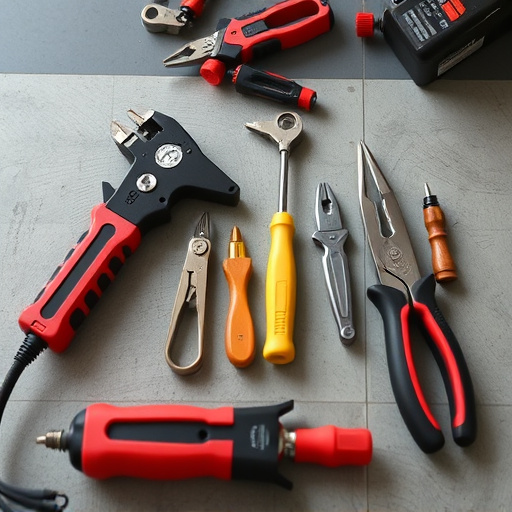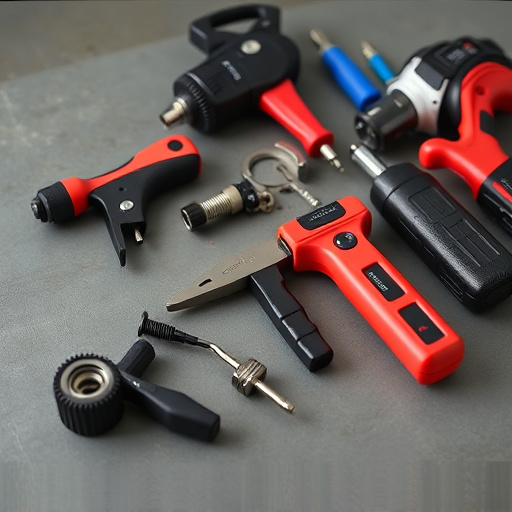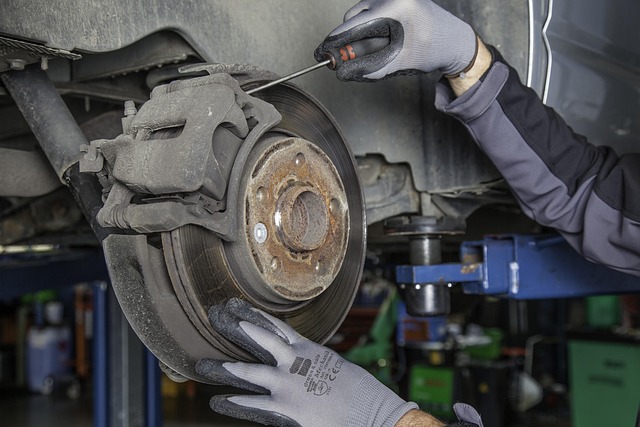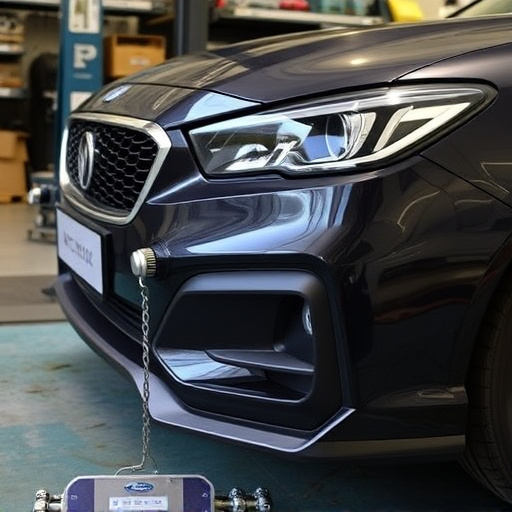The Mercedes Tire Pressure Monitoring System (TPMS) maintains vehicle safety and performance by monitoring tire pressure. Calibration is essential after initial setup, tire changes, or rotations to avoid false alarms and potential damage. To reset the TPMS, ensure all tires meet manufacturer PSI, locate and press the reset button for 10 seconds, then drive at over 15 mph for 10-15 minutes. Regular recalibration prevents issues like incorrect sensor readings, air leaks, or improper inflation, ensuring safe and fuel-efficient driving. For persistent problems, seek professional help from mechanics skilled in diagnostics and repairs, including paintless dent repair.
“Unleash the full potential of your Mercedes with a comprehensive guide to its Tire Pressure Monitoring System (TPMS) calibration. This essential tool ensures optimal performance and safety by maintaining ideal tire pressure. We’ll walk you through the process step-by-step, from understanding your vehicle’s TPMS to troubleshooting common issues. Learn how to reset and calibrate your Mercedes’ tire pressure monitor for a seamless driving experience. No more underinflated tires!”
- Understanding Mercedes Tire Pressure Monitoring System (TPMS)
- Steps to Calibrate Your Mercedes TPMS
- Common Issues and Troubleshooting Tips for TPMS Calibration
Understanding Mercedes Tire Pressure Monitoring System (TPMS)

The Mercedes Tire Pressure Monitoring System (TPMS) is a sophisticated technology designed to ensure optimal vehicle performance and safety. This system constantly monitors tire pressure, providing drivers with real-time alerts if any tire is underinflated or overinflated. By keeping tires at the recommended PSI, the TPMS helps prevent car damage repair and vehicle body repair by reducing risks like blowouts, increased wear, and uneven tread wear. It also contributes to fuel efficiency and better handling of your Mercedes.
Understanding how to reset and calibrate the Mercedes tire pressure monitor is crucial for maintaining your vehicle’s health. Regular calibration ensures the TPMS provides accurate readings, preventing false alarms and potential automotive repair issues. This process involves resetting the system after initial installation or when tires are replaced or rotated, ensuring it accurately reflects the current tire pressures according to Mercedes’ specifications.
Steps to Calibrate Your Mercedes TPMS

To calibrate your Mercedes Tire Pressure Monitoring System (TPMS), begin by ensuring all tires are properly inflated to the manufacturer’s recommended PSI. This can usually be found on a sticker inside the driver’s door or in your vehicle’s owner manual. Next, locate the TPMS reset button, typically situated beneath the steering wheel or in the glove compartment. Press and hold this button for approximately 10 seconds until the dashboard indicators flash.
Post-reset, drive your Mercedes at speeds exceeding 15 mph for about 10-15 minutes to allow the system to learn and calibrate against the actual tire pressures. Throughout this process, any discrepancies in pressure will trigger the low-pressure warning light on your dashboard. Upon completion, check each tire’s pressure again to ensure they maintain the ideal PSI levels, and remember that regular auto maintenance, including timely TPMS recalibration, is key to keeping your vehicle safe and roadworthy, preventing issues like paintless dent repair or more extensive vehicle body repair.
Common Issues and Troubleshooting Tips for TPMS Calibration

When calibrating your Mercedes Tire Pressure Monitoring System (TPMS), several common issues can arise that require troubleshooting. One frequent problem is incorrect sensor readings due to air leaks in the tire or improper inflation pressure. If your vehicle’s TPMS light stays on after resetting, it could indicate a faulty sensor or valve cap. It’s important to address these issues promptly for safe and efficient driving.
For accurate calibration, ensure all tires are at the recommended pressure specified by Mercedes-Benz. Use a reliable tire gauge to check and adjust the pressure as needed. If you’re still facing challenges with your TPMS after trying these steps, consider seeking professional assistance. Skilled mechanics can perform advanced diagnostics and repairs, including paintless dent repair or frame straightening, if necessary, to resolve any physical damage that might be affecting sensor functionality.
The Mercedes Tire Pressure Monitoring System (TPMS) plays a vital role in ensuring optimal vehicle safety and fuel efficiency. By understanding its functionality and following the comprehensive calibration guide provided, owners can effectively maintain their TPMS and avoid issues like a faulty Mercedes tire pressure monitor reset. Regular calibration not only extends tire life but also enhances overall driving experience, making it an essential task for every Mercedes owner to stay on top of.














